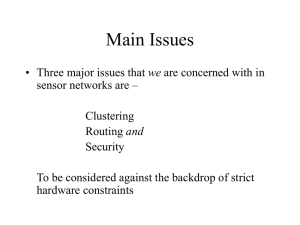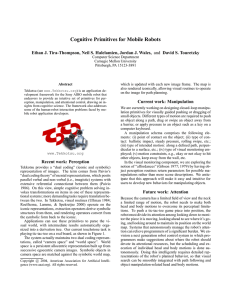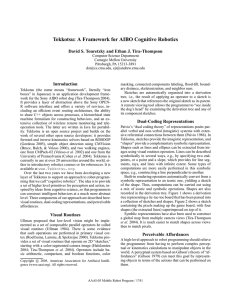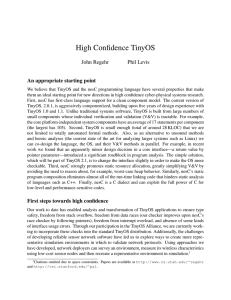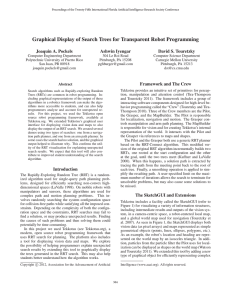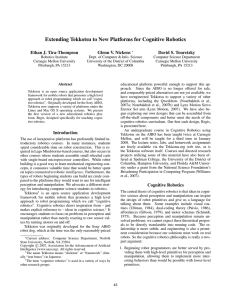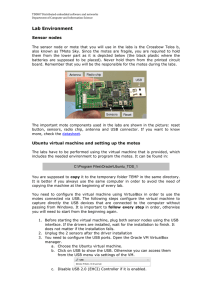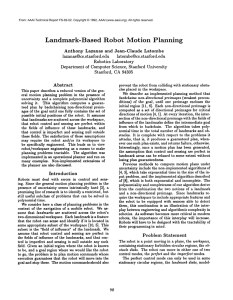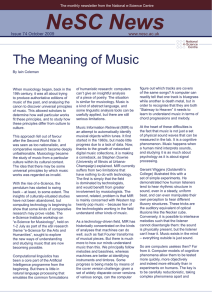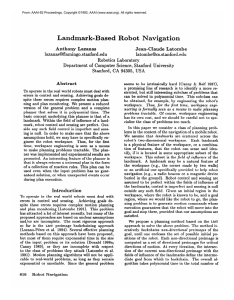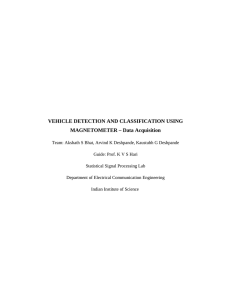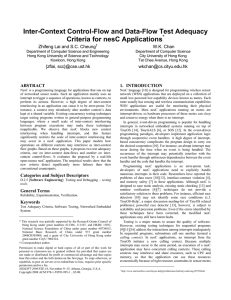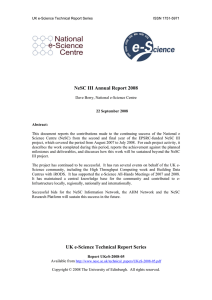Autonomous Indoor Environment Surveillance Robotic System
advertisement
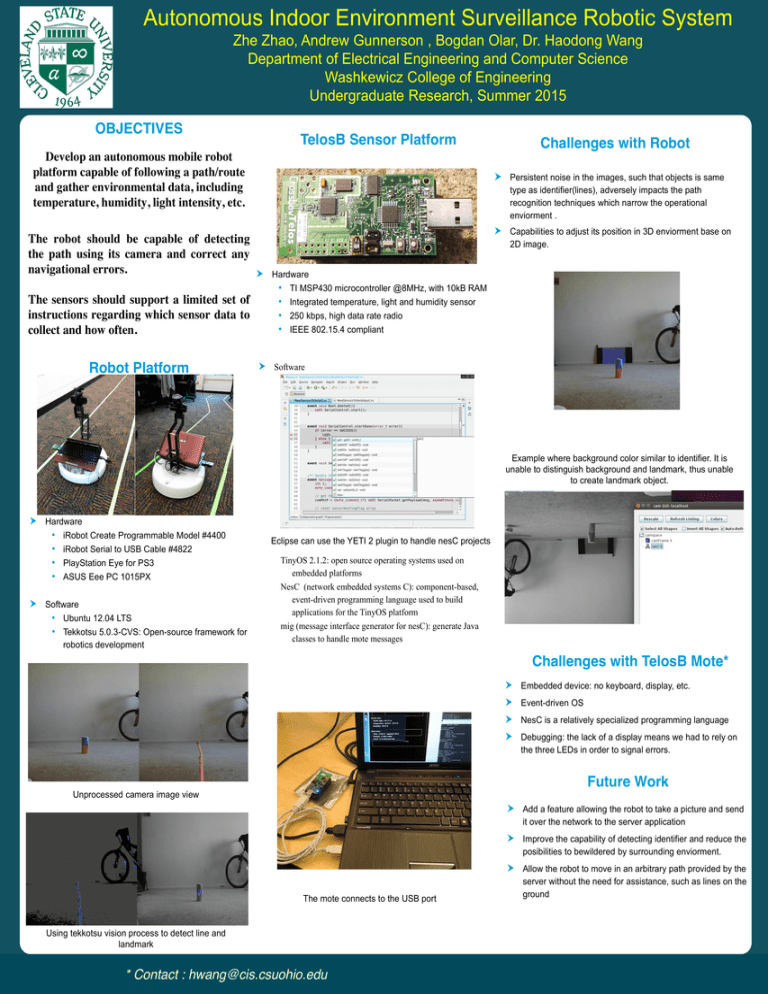
Autonomous Indoor Environment Surveillance Robotic System Zhe Zhao, Andrew Gunnerson , Bogdan Olar, Dr. Haodong Wang Department of Electrical Engineering and Computer Science Washkewicz College of Engineering Undergraduate Research, Summer 2015 OBJECTIVES TelosB Sensor Platform Develop an autonomous mobile robot platform capable of following a path/route and gather environmental data, including temperature, humidity, light intensity, etc. The robot should be capable of detecting the path using its camera and correct any navigational errors. The sensors should support a limited set of instructions regarding which sensor data to collect and how often. Robot Platform Challenges with Robot Persistent noise in the images, such that objects is same type as identifier(lines), adversely impacts the path recognition techniques which narrow the operational enviorment . Capabilities to adjust its position in 3D enviorment base on 2D image. Hardware • TI MSP430 microcontroller @8MHz, with 10kB RAM • Integrated temperature, light and humidity sensor • 250 kbps, high data rate radio • IEEE 802.15.4 compliant Software Example where background color similar to identifier. It is unable to distinguish background and landmark, thus unable to create landmark object. Hardware • iRobot Create Programmable Model #4400 • iRobot Serial to USB Cable #4822 • PlayStation Eye for PS3 • ASUS Eee PC 1015PX Software • Ubuntu 12.04 LTS • Tekkotsu 5.0.3-CVS: Open-source framework for robotics development Eclipse can use the YETI 2 plugin to handle nesC projects TinyOS 2.1.2: open source operating systems used on embedded platforms NesC (network embedded systems C): component-based, event-driven programming language used to build applications for the TinyOS platform mig (message interface generator for nesC): generate Java classes to handle mote messages Challenges with TelosB Mote* Embedded device: no keyboard, display, etc. Event-driven OS NesC is a relatively specialized programming language Debugging: the lack of a display means we had to rely on the three LEDs in order to signal errors. Future Work Unprocessed camera image view Add a feature allowing the robot to take a picture and send it over the network to the server application Improve the capability of detecting identifier and reduce the posibilities to bewildered by surrounding enviorment. The mote connects to the USB port Allow the robot to move in an arbitrary path provided by the server without the need for assistance, such as lines on the ground * Contact : hwang@cis.csuohio.edu www.postersessi www.postersession.com on.com Using tekkotsu vision process to detect line and landmark www.postersession.com


